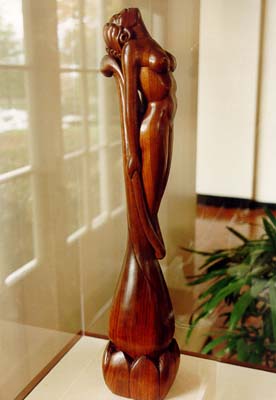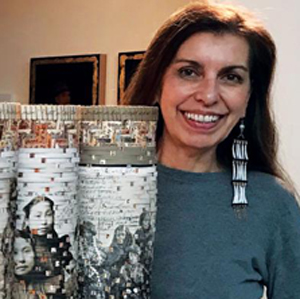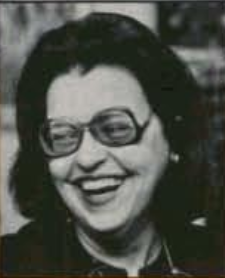Related Research Articles

Oklahoma is a state in the South Central region of the United States. It borders Texas to the south and west, Kansas to the north, Missouri to the northeast, Arkansas to the east, New Mexico to the west, and Colorado to the northwest. Partially in the western extreme of the Upland South, it is the 20th-most extensive and the 28th-most populous of the 50 United States. Its residents are known as Oklahomans and its capital and largest city is Oklahoma City. The state's name is derived from the Choctaw words okla, 'people' and humma, which translates as 'red'. Oklahoma is also known informally by its nickname, "The Sooner State", in reference to the Sooners, American settlers who staked their claims in formerly American Indian-owned lands until the Indian Appropriations Act of 1889 authorized the Land Rush of 1889 opening the land to settlement.

Charles Banks Wilson was an American artist. Wilson was born in Springdale, Arkansas in 1918; his family eventually moved to Miami, Oklahoma, where he spent his childhood. A painter, printmaker, teacher, lecturer, historian, magazine and book illustrator, Wilson's work has been shown in over 200 exhibitions in the United States and across the globe.

Franklin Gritts, also known as Oau Nah Jusah, or "They Have Returned", was a Keetoowah Cherokee artist best known for his contributions to the "Golden Era" of Native American art, both as a teacher and an artist.

Willard Stone was an American artist best known for his wood sculptures carved in a flowing Art Deco style.
Cecil Dick, or Degadoga (1915–1992) was a well-known Cherokee artist often referred to as "the Father of Cherokee Traditional Art."
Walter Richard West Sr., was a painter, sculptor, and educator. He led the Art Department at Bacone College from 1947 to 1970. He later taught at Haskell Institute for several years. West was an enrolled citizen of the Cheyenne and Arapaho Tribes.
The Bacone school or Bacone style of painting, drawing, and printmaking is a Native American intertribal "Flatstyle" art movement, primarily from the mid-20th century in Eastern Oklahoma and named for Bacone College. This art movement bridges historical, tribally-specific pictorial painting and carving practices towards an intertribal Modernist style of easel painting. This style is also influenced by the art programs of Chilocco Indian School, north of Ponca City, Oklahoma, and Haskell Indian Industrial Training Institute, in Lawrence, Kansas and features a mix of Southeastern, Prairie, and Central Plains tribes.

Shan Goshorn was an Eastern Band Cherokee artist, who lived in Tulsa, Oklahoma. Her interdisciplinary artwork expresses human rights issues, especially those that affect Native American people today. Goshorn used different media to convey her message, including woven paper baskets, silversmithing, painting, and photography. She is best known for her baskets with Cherokee designs woven with archival paper reproductions of documents, maps, treaties, photographs and other materials that convey both the challenges and triumphs that Native Americans have experienced in the past and are still experiencing today.
Dana Tiger is a Muscogee artist of Seminole and Cherokee descent from Oklahoma. Her artwork focuses on portrayals of strong women. She uses art as a medium for activism and raising awareness. Tiger was inducted into the Oklahoma Women's Hall of Fame in 2001.
Bert Dail Seabourn was an American expressionist painter, known for his stylized and nonrepresentational neo-expressionist artist. In his early career, he published comic book art and realistic pieces, as well as commercial art. He has won multiple awards for his artworks. An alumnus of Oklahoma City University, the school awarded him the honorary degree of Doctor of Humane Letters in 1997.
Mel Cornshucker is a contemporary Cherokee potter living in Tulsa, Oklahoma, who works in stoneware, porcelain, and raku clay. Cornshucker is known for his high-fire stoneware, decorated with hand-painted, Native-inspired motifs and designs.
Merlin Little Thunder is a Southern Cheyenne artist living in Tulsa, Oklahoma. His paintings express the history, people, and the land in a narrative, representational style, especially from the perspective of the Southern Cheyenne people. He is known for his miniature paintings, bright colors, and for the incorporation of humor into his work.
William E. Rabbit was an American artist who experimented with various styles, painting as he felt rather than according to public expectations. Rabbit exhibited his art in numerous locations and won many awards over the period of his artistic career. In 1986, he was designated Master Artist by the Five Civilized Tribes Museum. Toward the end of his life, Rabbit began collaborating on paintings with his daughter Traci, in their mutual studio located in Pryor Creek, Oklahoma. He died on April 9, 2012.
Tom Fields is a Muscogee Creek/Cherokee photographer from Oklahoma. He has worked in both commercial and fine art photography during his career. Fields specializes in full-frame, black-and-white photos, shot as close as possible, of American Indian communities. For Fields, his work provides a "visual definition of what it is like to be Native American in Oklahoma."
Rance Hood is an Oklahoma Native artist who echoes traditional Native American culture in his paintings. A self-taught artist, Hood was raised by his maternal grandparents who exposed him to Comanche Indian ways and values.

Valjean McCarty Hessing was a Choctaw painter, who worked in the Bacone flatstyle. Throughout her career, she won 9- awards for her work and was designated a Master Artist by the Five Civilized Tribes Museum in 1976. Her artworks are in collections of the Heard Museum of Phoenix, Arizona; the Philbrook Museum of Art in Tulsa, Oklahoma; the Southern Plains Indian Museum in Anadarko, Oklahoma; and the Wheelwright Museum of the American Indian of Santa Fe, New Mexico, among others.
Mary Adair is a Cherokee Nation educator and painter based in Oklahoma.

Jane McCarty Mauldin was a Choctaw artist, who simultaneously worked in commercial and fine art exhibiting from 1963 through 1997. Over the course of her career, she won more than 100 awards for her works and was designated as a "Master Artist" by the Five Civilized Tribes Museum in Muskogee, Oklahoma. She has works in the permanent collections of the Heard Museum, the Heritage Center of the Red Cloud Indian School and the collections of the Department of the Interior, as well as various private collections.
Gary Montgomery is a professional artist of Seminole descent who primarily works with oil paints. An artist since the 1970s, Montgomery has established a reputation as a skilled Native artist. His work has been included in many exhibitions at the Five Civilized Tribes Museum in Muskogee, Oklahoma and numerous galleries in Oklahoma City. The Gilcrease Museum acquired his painting “Grizzly Bear with Reflection in Water” in 2006.
Bill Glass Jr. is a Cherokee Nation ceramic artist, sculptor, and public artist, who was named a Cherokee National Treasure in 2009.
References
- 1 2 "Robert Lee Taylor". askArt. Retrieved 10 May 2022.
- ↑ "Doris: She Walks With the Nations". National Museum of the American Indian. Archived from the original on 10 May 2022. Retrieved 10 May 2022.
- ↑ "Enduring Grace - Robert Taylor (1951)". Archived from the original on 1 September 2024. Retrieved 1 September 2024.
- ↑ "Oral history interview with Robert Taylor". 15 September 2010. Archived from the original on 1 September 2024. Retrieved 1 September 2024.
- ↑ Pearson Little-Thunder, Julie (September 15, 2010). "Oral history interview with Robert Taylor". Oklahoma Native Artists. Retrieved 23 July 2020.
- 1 2 Pearson, Julie. "Robert Taylor". Southwest Art. Retrieved 17 August 2015.
- ↑ "Robert Taylor". Pierson Gallery. Archived from the original on 17 March 2018. Retrieved 17 August 2015.
- 1 2 "Taylor, Robert". Native Arts of America. Retrieved 17 August 2015.
- ↑ Skeen, Kelly. "Week Eight: Robert Taylor". WordPress. Retrieved 17 August 2015.